Pre-Production Review: 2012 Toyota Prius C

A few years ago I was let in on a secret: Toyota’s dreams of world domination hinged on capturing hip young buyers interested in green tech and high fuel economy. Of course, Toyota’s hybrid plans have been the worst kept secret since In-N-Out’s “secret menu” and as a result, the green Gen Y boys and girls I know in Berkeley have been excited for years about a “baby Prius”. Well kids, the blue spaceship landed in La Jolla and Toyota invited us down to take a drive. Does a hybrid Yaris with more MPGs than you can shake a stick at have what it takes help Prius become Toyota’s best-selling nameplate? Let’s find out.
When I suggested that the Prius c was a Yaris hybrid, my Toyota hosts tried to steer me back on the path of “small Prius.” The Prius c uses a highly modified 5-door Yaris platform, modified enough that almost no Yaris content remains. The Prius c shares no sheetmetal, drivetrain, or interior components that we could find, and I’m told almost nothing of the Yaris suspension remains. Strangely, other than the steering wheel, very little of the liftback Prius was imported either. What was the point of using the Yaris as a start? It was cheaper than shrinking the Prius unibody. The “c” is more than 19 inches shorter, 2 inches narrower and 500 pounds lighter than the full-size Prius slotting it firmly in the subcompact class. Due to the true hatchback design, the “c” loses only 1.2 inches of legroom up front and 1 inch in the rear when compared to the Prius. Compared to its Yaris donor car, the “c” has a stretched wheelbase which improves legroom over the entry level Toyota by two inches (though it’s 200 lbs heavier overall).
Under the hood sits a revised 1.5L Atkinson cycle four-cylinder engine, essentially the same 73HP mill used in the first generation Prius with some key modifications. To improve efficiency, Toyota removed all belt driven accessories. Even the water-pump is electric on the diminutive four banger. Because the Prius liftback is wider than a Yaris, Toyota created a new Hybrid Synergy Drive CVT transmission that is smaller and lighter. In addition to the new transmission, the c also uses a new 144V battery pack and inverter that are smaller and lighter than the regular Prius. Total system output is 99HP (about 35 less than the 1.8L in the Prius), but quite similar to the Yaris 5-door’s 106HP. The light weight and revised drivetrain conspire to make the Prius c the most efficient non-plug-in vehicle sold in North America at 53/43 MPG (City/Highway) with a lofty 50MPG on the combined scale. Much like the liftback, acceleration is accompanied by the engine revving to stratospheric RPMs and hanging out there until you release the go-pedal. While many rags bash the “drone” of the drivetrain, I consider it a fair trade for high fuel economy. Your mileage may vary.
The Prius c’s interior shares essentially nothing with the Yaris save a preference for low rent headliners. The Prius c pulls its flat-bottomed steering wheel from the regular Prius, but little else is shared with the dashboard, sporting hard but nicely textured plastics and a standard high-resolution 3.5 inch full-color LCD. A wide variety of fairly dubious in-car apps relating to “Eco” driving are also present. The front seats felt fairly supportive during our hour long drive, but buyers should beware that the base trim level has a driver’s seat that isn’t as adjustable as the other models.
Like the Prius, the c comes in numbered packages. “One” is obviously the price leader at $18,950, achieved by “decontetning” niceties like cruise control, cargo area lights, adjustable front headrests, the center armrest and tonneau cover. Toyota did take a note from their Korean competitors and included Bluetooth and iPod integration standard on the base model. The $19,900 “Two” adds a 6-speaker audio system, variable intermittent wipers, 60/40 folding rear seat, cruise control, center armrest and an engine immobilizer-style key. “Three” lists for $21,635 and adds Toyota’s Entune Navigation radio with 6.1-inch touchscreen , XM and HD radio, and “Entune App” capability (Pandora, Bing, etc). Also included on “Three” is Toyota’s keyless entry and keyless go, a telescoping steering wheel and the option to add $390 alloy wheels and a $850 sunroof. The top-of-the-line “Four” brings 15 inch 8-spoke alloys to the party, “Softex” seats, heated front seats, fog lamps and turn signals in the side mirrors for $23,230. The “Four” can also be equipped with the $850 moonroof and an optional 16-inch alloy wheel and sport steering package for $300 (or $1150 when combined with the sunroof) topping the Prius c out at $24,380, just a few hundred over a base Prius liftback. The bigger wheels bring with them wider rubber (195 vs 175 width), and a different steering ratio that drops the lock-to-lock turns from 3.02 to 2.28. Unfortunately, the turning circle grows ridiculously from a tight 31.4 to a Buick-like 37.4 feet while causing a reduction in ride quality.
The new Entune system is a step in the right direction for Toyota’s infotainment systems. Entune integrated well with my iPhone 4 and my iPod Nano as well as the Android 2.3 phone that Toyota had in the car. In order to use the Entune data services like Bing, OpenTable, Pandora and iHeartRadio, you will need a smart phone with a data plan (tethering plans are not required) and after the first three years, you’ll also have to pay Toyota a yearly subscription fee. Sadly, Entune still does not provide for voice command of your iPod or MP3 data device ala Ford’s SYNC.
We had a fairly limited time with the baby Prius so I’ll save the majority of drive opinions for a longer affair with the small hybrid. Interested parties should just avoid the “One” unless that’s all you can afford. The content level is not as bad as most economy cars but the lack of cruise control and the center armrest are worth the upgrade price. Similarly steer clear of the “Four”, the faux-leather upholstery looks good in photos and is likely easier to clean, but the price of admission is steep and the non-breathable leather seats made our backsides sticky after only an hour. If you really must go for the “Four”, upgrade your wheels aftermarket. The lower profile rubber and ginormous turning circle that come with the upgraded package by Toyota make this a non-starter for me.
During our 140 miles with the Prius c (split between all four models of the Prius c) on city streets, windy mountain roads and 70MPH highway runs, we were unable to get the Prius c to drop below 50MPG and averaged a very respectable 53MPG overall with the A/C in constant use. That puts the c easily ahead of the regular Prius’ real-world MPG and more than 20MPG ahead of the 2012 Toyota Yaris 5-door’s combined score. Here we come full-circle to the Yaris hybrid concept. If you’re shopping the Yaris as an economical vehicle, the “Prius c Two” makes a compelling argument. While the Prius is $3,640 more expensive than the similarly equipped Yaris LE, it delivers 60% better fuel economy, an improved interior with more room, and no real sacrifices aside from a steeper price. If you drive 15,000 miles a year it would take only 5 years (or 75,000 miles) to break even when compared with the Yaris (or most other compact hatchbacks) based on California’s high gas prices. While I’m unconvinced that the Prius c will provide much excitement for the urban Gen Y buyer, I have little doubt it will prove an extremely economical vehicle to own in the long run and is worth serious consideration by anyone shopping for a subcompact hatch and in the process Toyota might just dominate the world.
Toyota flew us to San Diego, put us up for the night and provided a gaggle of pre-production Prius c models for our amusement.

More by Alex L. Dykes
Latest Car Reviews
Read moreLatest Product Reviews
Read moreRecent Comments
- Arthur Dailey We have a lease coming due in October and no intention of buying the vehicle when the lease is up.Trying to decide on a replacement vehicle our preferences are the Maverick, Subaru Forester and Mazda CX-5 or CX-30.Unfortunately both the Maverick and Subaru are thin on the ground. Would prefer a Maverick with the hybrid, but the wife has 2 'must haves' those being heated seats and blind spot monitoring. That requires a factory order on the Maverick bringing Canadian price in the mid $40k range, and a delivery time of TBD. For the Subaru it looks like we would have to go up 2 trim levels to get those and that also puts it into the mid $40k range.Therefore are contemplating take another 2 or 3 year lease. Hoping that vehicle supply and prices stabilize and purchasing a hybrid or electric when that lease expires. By then we will both be retired, so that vehicle could be a 'forever car'. Any recommendations would be welcomed.
- Eric Wait! They're moving? Mexico??!!
- GrumpyOldMan All modern road vehicles have tachometers in RPM X 1000. I've often wondered if that is a nanny-state regulation to prevent drivers from confusing it with the speedometer. If so, the Ford retro gauges would appear to be illegal.
- Theflyersfan Matthew...read my mind. Those old Probe digital gauges were the best 80s digital gauges out there! (Maybe the first C4 Corvettes would match it...and then the strange Subaru XT ones - OK, the 80s had some interesting digital clusters!) I understand the "why simulate real gauges instead of installing real ones?" argument and it makes sense. On the other hand, with the total onslaught of driver's aid and information now, these screens make sense as all of that info isn't crammed into a small digital cluster between the speedo and tach. If only automakers found a way to get over the fallen over Monolith stuck on the dash design motif. Ultra low effort there guys. And I would have loved to have seen a retro-Mustang, especially Fox body, have an engine that could rev out to 8,000 rpms! You'd likely be picking out metal fragments from pretty much everywhere all weekend long.
- Analoggrotto What the hell kind of news is this?




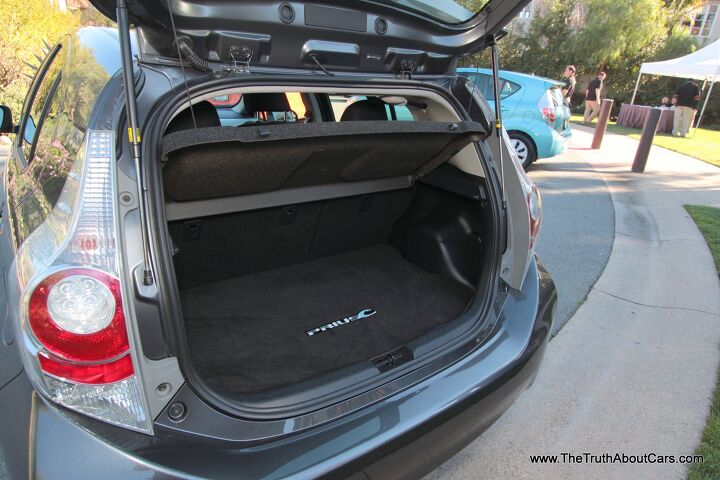




















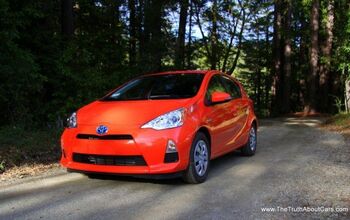
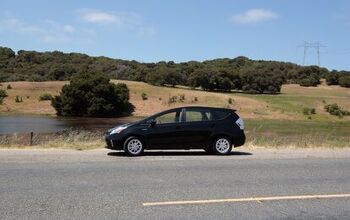
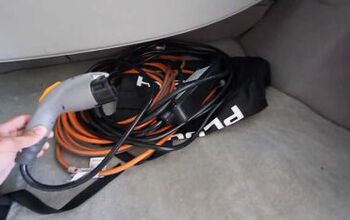
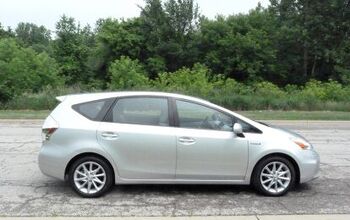




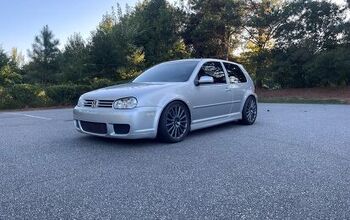






Comments
Join the conversation
Using an Apple analogy ;) Prius= ipod Prius V=ipad Prius C= ipod nano
Woman driver here, be nice fellas. I live in Atlantic Canada and our winters can get pretty cold. I'm curious if anyone knows if subzero temperatures will prematurely shorten the lifespan of the Prius c batteries? I don't trust the salespeople because, unfortunately, they'll tell you exactly what you want to hear to sell you a car. I'm on the fence about buying a Prius just for this reason. I know the cold weather here is hard on regular car batteries that costs $$$$ less than a hybrid battery.